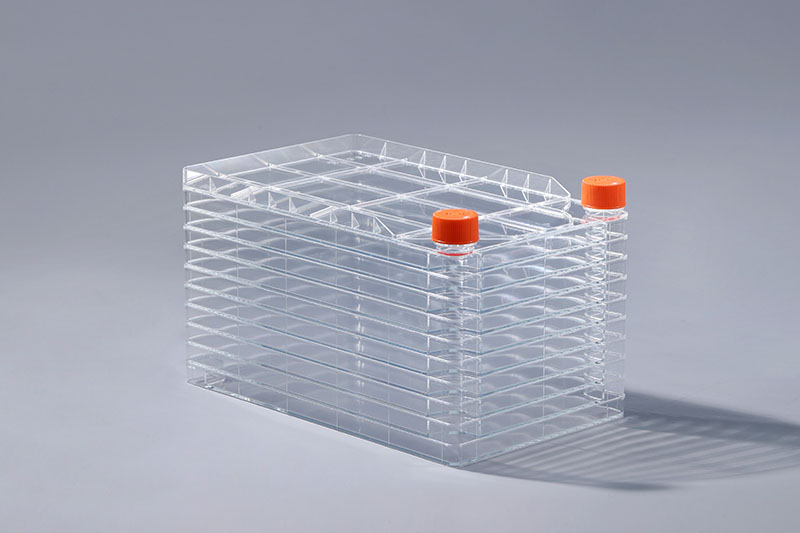Cell Factoryje viacvrstvový spotrebný materiál na kultiváciu buniek vhodný na kultiváciu buniek vo veľkom meradle. Okrem špecifického prostredia pre bunkovú kultúru je nevyhnutným riešením aj tráviaca šťava.
V in vitro kultivácii tkanivových buniek a disperzii tkanivových buniek v primárnej bunkovej kultúre (tkanivový blok sa pripravuje do jedinej bunkovej suspenzie), ako aj v subkultúre, na štiepenie a dispergovanie adherentných rastúcich buniek by sa mal použiť roztok na štiepenie tkanivových buniek. Tráviaci roztok používaný v technológii kultivácie bunkovej továrne je hlavne trypsín, EDTA atď. Hlavnými zložkami bunkovej membrány a adhézie medzi bunkami sú lipoproteíny a polysacharidy. Trypsín v trypsíne môže premieňať proteíny na peptóny a pankreatická lipáza môže rozkladať tuk na glycerol a mastné kyseliny, čím oddeľuje bunky. Bunky sú lyzované. Funkciou tráviaceho roztoku je hlavne hydrolyzovať medzibunkové proteíny (ako je extracelulárna matrica), dispergovať tkanivo alebo adherentné bunky do jednotlivých buniek a vytvoriť bunkovú suspenziu pre ďalšie experimenty.
Dôležitú úlohu zohrávajú tráviace enzýmy v kultúre bunkových tovární, ale treba poznamenať, že rôzne bunky majú rôzne reakcie na pankreatické enzýmy. Pri hodnote pH 8,0 a teplote 37 °C má roztok pankreatického enzýmu najsilnejší účinok. koncentrácia, teplota a čas by mali byť pri použití dobre kontrolované, aby sa predišlo nadmernému tráveniu ovplyvňujúcemu priľnavosť a rast buniek.
Digestive enzymes play an important role in the culture of cell factories, but it should be noted that different cells have different responses to pancreatic enzymes. When the pH value is 8.0 and the temperature is 37 °C, the pancreatic enzyme solution has the strongest effect. , the concentration, temperature and time should be well controlled when using, so as to avoid excessive digestion affecting the adherence and growth of cells.
The FAI climbed 5.9 percent year-on-year in the first 11 months of 2018, quickening from the 5.7-percent growth in Jan-Oct, the National Bureau of Statistics (NBS) said Friday in an online statement.
The key indicator of investment, dubbed a major growth driver, hit the bottom in August and has since started to rebound steadily.
In the face of emerging economic challenges home and abroad, China has stepped up efforts to stabilize investment, in particular rolling out measures to motivate private investors and channel funds into infrastructure.
Friday's data showed private investment, accounting for more than 60 percent of the total FAI, expanded by a brisk 8.7 percent.
NBS spokesperson Mao Shengyong said funds into weak economic links registered rapid increases as investment in environmental protection and agriculture jumped 42 percent and 12.5 percent respectively, much faster than the average.
In breakdown, investment in high-tech and equipment manufacturing remained vigorous with 16.1-percent and 11.6-percent increases respectively in the first 11 months. Infrastructure investment gained 3.7 percent, staying flat. Investment in property development rose 9.7 percent, also unchanged.
 English
English



















































